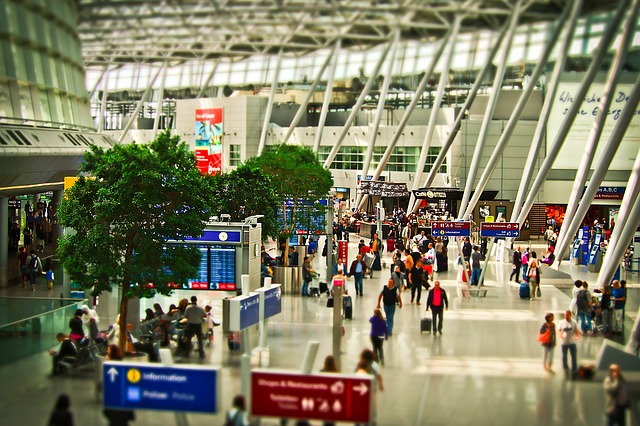Human trafficking is a crime that often involves travel. This may be by car, train, bus, or taxi, but it can also occur by air travel. Travel may be between countries, though it is often within a victim’s own country, between states, or between cities within a state.
Air travel can be used in recruitment tactics, such as when a victim is lured under a false pretense. This tactic may include the building of a romantic relationship, often through a “boyfriend,” where someone is traveling to meet another person they have likely not met before.
This tactic may also be the false promise of a better life – a job opportunity that is in another country, state, or town. The promise of earning wages to send back home or to receive an education as part of a job can lure someone to travel by plane.
In any of these circumstances, airline and airport staff (and travelers) are eyes in the sky, but even before that moment, they are the eyes on the ground – at check-in, boarding, and baggage claim.
Awareness, training and protocols, corporate policies, and survivor reintegration support are all ways airlines and airports can engage to end human trafficking and protect the vulnerable.
Awareness
Millions of travelers fly every year, through thousands of airports, including over 19,000 airports in the U.S. alone. With people, local and foreign, passing through terminals every day, airports are uniquely positioned to bring awareness of human trafficking to travelers.
Airports can participate in campaigns to let passengers know what to do if they suspect human trafficking. Signs for the National Human Trafficking Hotline number (888-373-7888) can be posted throughout terminals or in the bathrooms. This display allows victims to view the number and call, and equips travelers to remain alert and know what to do.
Sports fans around the world will often fly into cities where major sporting events are taking place. Airlines can offer in-flight videos to educate travelers about human trafficking. American Airlines (with It’s a Penalty) and Delta Airlines implemented this awareness strategy leading up to the 2019 Super Bowl.
*To learn more about what awareness is and what red flags to look for, read our Prevention blog post.
Training
Training is industry specific, with terminology and protocols tailored to each sector. In addition to learning about the issue, airlines are uniquely positioned to identify and respond to human trafficking. Airlines can be trained to know what warning signs to look for at check-in (i.e. one-way tickets, passengers not knowing who purchased their tickets, where they are going, when they land, etc.), and what to look for during boarding and while in-flight (i.e. passengers not making eye contact, traveling to meet someone they met online, not being able to speak for themselves, etc.).
In addition to knowing what to look for, airline staff must have a response protocol that everyone is trained to implement. Staff must know what to do, who to report to, and what actions to take to ensure both their safety and the safety of the victim.
*For more information on training and protocols, read our Identification blog post. For specifics on what airlines and airports can look for, review the Airports Council International Combatting Human Trafficking Handbook.
Survivor Reintegration Support
There are several ways airlines are uniquely positioned to support the reintegration of survivors. Airlines can partner with organizations to offer flights to survivors who are reuniting with their families, traveling for an aftercare program, or reintegrating to their home city. Airlines can also offer travelers the opportunity to donate their air miles for these services.
Airlines can also become creative with donations, such as Southwest Airlines did when they partnered with the television show Project Runway (season 6) and the nonprofit Rethreaded (that supports survivor reintegration) to create the Rethreaded x Southwest Airlines® Collection. Southwest Airlines donated leather from seat covers so Rethreaded and the Project Runway winner could collaborate and design products inspired by the original Project Runway All Stars collection, including a leather jewelry and accessory line.
*For more information on reintegration and programs, read our Restoration blog post.
Policy
Airlines are uniquely positioned to take a stand against human trafficking with their internal and corporate policies as well. Airlines and airports can sign resolutions and a code of conduct, just as American Airlines and Hartsfield-Jackson Atlanta International Airport have done.
What YOU Can Do:
- Share with others who travel about what to look for and what they can do (See our Business Traveler Occupational Profile and Video)
- Learn if your airport has a policy or ongoing effort to bring awareness to travelers
- Learn what airlines have a policy and/or offer training before booking your next flight
- Share information about human trafficking, as well as ways to engage, with flight attendants, booking agents, and other staff members
- Post on social media when you see airport and airline efforts that bring awareness
Human trafficking can be identified in airports and on airplanes. Airport personnel and travelers are uniquely positioned to engage – to raise awareness, to identify victims, and to support survivors of human trafficking.

